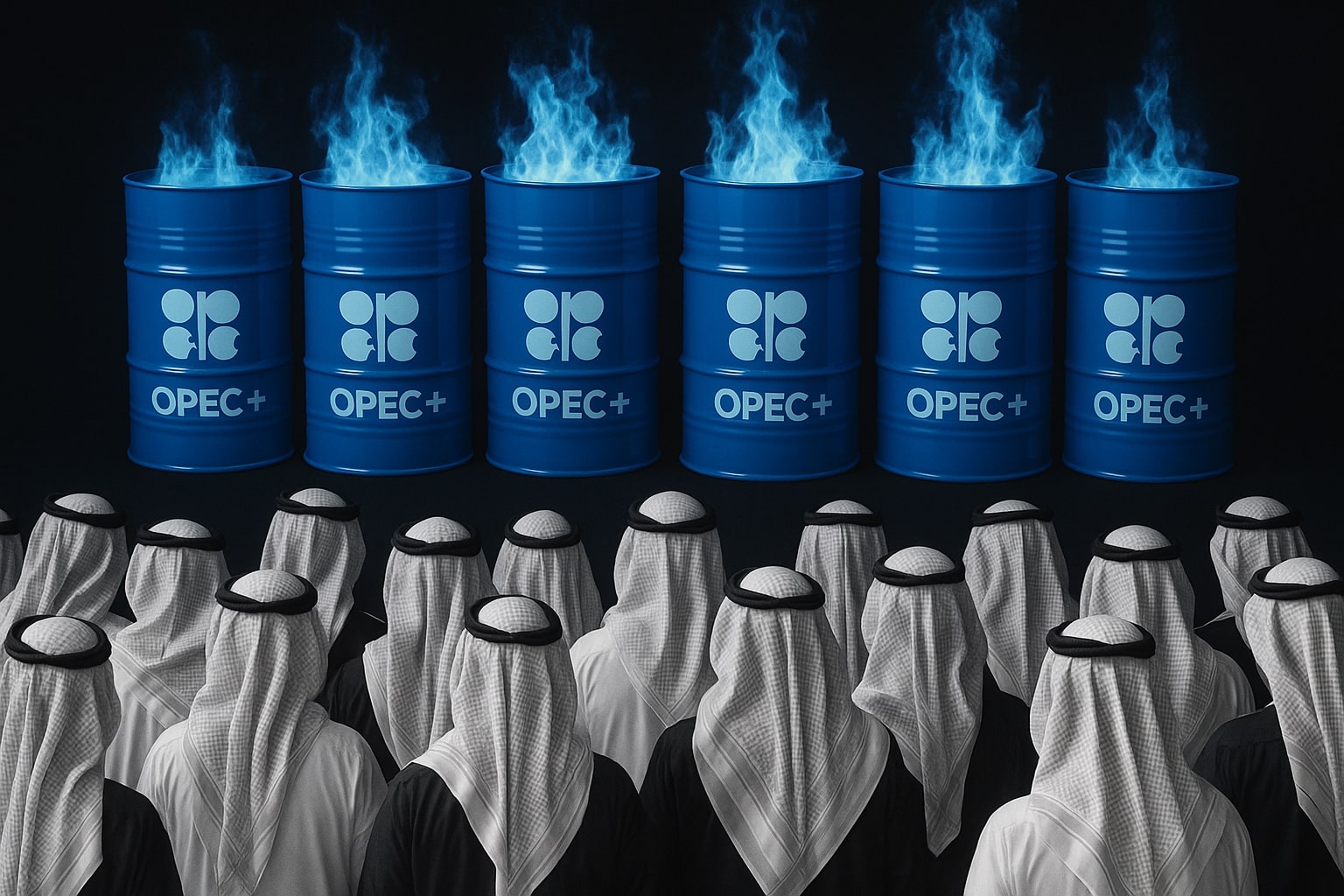Oil Price Forecast and Market Revisions: HSBC Slashes Projections
WTI (CL=F) and Brent (BZ=F) oil prices have been subject to a series of downward revisions in recent weeks, and the latest outlook from HSBC highlights significant changes in expectations. The bank has revised its 2025 Brent forecast down to $68.50 per barrel from $73, while also reducing its 2026 projection to $65 from $70. These changes reflect the ongoing market volatility and shifting geopolitical risks, with U.S.-China trade tensions playing a central role in the downward pressure on prices. The decision by OPEC+ to increase production by 411,000 barrels per day (bpd) also adds to the bearish sentiment, making the market's near-term outlook uncertain.
The impact of Trump’s tariff policies is undeniable, as tariffs have not only increased trade barriers but also dented global demand expectations. As a result, oil prices have dipped significantly. Brent crude is hovering around $64.56, while WTI is trading at $61.25, both of which represent over a 20% decline from early-year highs. These price levels are placing considerable strain on U.S. shale producers, who need prices above $65 per barrel to maintain profitability in their drilling operations.
Geopolitical Factors Driving Oil Price Uncertainty
The ongoing U.S.-China trade war continues to dominate the global oil market narrative. As China and the U.S. impose tariffs on each other's goods, oil demand is taking a hit. This is evident from the latest IEA (International Energy Agency) report, which has lowered its global oil supply growth forecast for 2025 to 1.2 million bpd, down from previous estimates of 1.5 million bpd. This adjustment reflects the growing strain on global oil supply chains, exacerbated by economic disruptions caused by the trade war.
Moreover, the Trump administration’s sanctions on Venezuela have significantly impacted its oil production, with Venezuelan crude production plummeting due to the sanctions. This has contributed to a tight supply in global markets, especially as oil prices remain below the levels needed for many producers to break even.
While these geopolitical tensions are putting downward pressure on prices, there are signs that the U.S. is seeking to increase its energy exports. Countries like South Korea and Indonesia are negotiating to import more U.S. crude oil and LNG in exchange for tariff reductions. This could offset some of the negative price impacts from the U.S.-China trade tensions.
Oil Inventory Changes and Market Fundamentals
Recent data from the American Petroleum Institute (API) showed an unexpected increase in crude oil inventories by 2.4 million barrels for the week ending April 11, while analysts had anticipated a decline of 1.68 million barrels. This increase adds to the growing stockpile of oil in the market, which has climbed by more than 24 million barrels since the beginning of the year. At the same time, gasoline inventories fell by 3 million barrels, and distillate inventories decreased by 3.2 million barrels, indicating a tightening of refined products despite the rising crude inventories.
These inventory shifts suggest that while oil prices have been under pressure, there is still demand for refined products. The U.S. Energy Information Administration (EIA) also reported that the Strategic Petroleum Reserve (SPR) added 0.3 million barrels, bringing its total to 397 million barrels, which remains far below historical levels before the recent withdrawals. This indicates that the U.S. government is preparing to release additional strategic reserves if needed, further impacting the market dynamics.
OPEC+ and Global Supply Growth: A Complex Outlook
OPEC+, the coalition of oil-producing nations, is set to increase production by 411,000 bpd in May. However, the IEA anticipates that this increase may be tempered by overproduction from certain countries within the group, leading to a less-than-expected contribution to global supply. The overall global supply growth for 2025 is expected to slow, with the IEA forecasting an increase of 1.2 million bpd in 2025, lower than the previous estimate. This slowdown is attributed to a combination of lower production from the U.S. and Venezuela, as well as tighter sanctions that are limiting the ability of certain countries to export oil.
Despite this, non-OPEC+ production is expected to continue growing, with a projected rise of 1.3 million bpd. The U.S. shale sector remains a key player in this growth, although its output is threatened by the current price environment, where WTI and Brent prices are struggling to maintain momentum above key levels.
The Future of Oil Prices: How Trade Tensions and Global Policies Are Shaping the Market
With Brent crude currently trading at $64.56 and WTI crude at $61.25, both benchmarks are seeing significant declines from their early-year highs. However, OPEC+’s production increase, combined with U.S. inventory fluctuations, points to a complicated picture for oil prices. The future of oil prices hinges largely on the resolution of U.S.-China trade relations and the continued efforts of OPEC+ to manage output. If tariffs continue to rise and global demand remains subdued, it could keep oil prices under pressure for the foreseeable future.
Additionally, the IEA’s forecasts for global supply growth and the EIA’s data on oil inventories suggest that while oil may face some short-term challenges, it may find support at key technical levels. The market will likely look to the next few months for clearer signals on whether the recent price dips are temporary or indicative of a broader trend.
WTI vs Brent: A Comparison of Key Oil Benchmarks
The comparison between WTI (CL=F) and Brent (BZ=F) prices highlights significant divergences in their market behavior. While Brent crude has been more sensitive to geopolitical tensions, such as the U.S.-China trade war and the volatility in the Middle East, WTI crude has shown a greater correlation to domestic U.S. production dynamics. The ongoing strain in the U.S. shale sector, with breakeven prices hovering around $65 per barrel, suggests that WTI prices may struggle to hold above this level unless there is a significant uptick in global demand or a resolution to the ongoing trade tensions.
Oil Market Outlook: A Time of Uncertainty and Cautious Optimism
The outlook for oil prices remains uncertain, with numerous factors influencing market dynamics. The escalating U.S.-China trade tensions, OPEC+’s production adjustments, and the shifting demand outlook due to geopolitical risks all contribute to the complex and unpredictable nature of the oil market. While some analysts, such as those at Goldman Sachs, continue to forecast Brent prices falling to $58 by 2026, others, like Barclays, maintain a more optimistic outlook with prices potentially reaching the mid-to-high $70s. For now, the oil market is caught in a delicate balance between supply-side concerns and geopolitical risks, making it difficult to predict any substantial price moves in either direction in the short term.




















